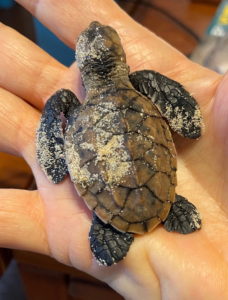
A hawskbill hatchling found on Lanikai Beach, October 11, 2021. Hawksbill turtle hatchlings are brown. Green turtle hatchlings are gray. ©Susan Scott
November 4, 2021
I’ve always been an eager traveler, barely over jet lag from one trip before planning the next. But I also love living in Hawaii, and all the traveling meant I was gone a lot. There was just never enough time. Then the pandemic struck. Suddenly, I was home all the time, reconnecting with the plants and animals that drew me to the Islands in the first place.
Last month, I had just returned from a windy walk on Lanikai Beach when a neighbor texted me that two other neighbors had found a baby sea turtle, belly up, on the beach. When we met on the street, the rescuers handed me a rare and wonderful creature: a hawksbill sea turtle hatchling.
Hawksbill turtles, called honu’ea in Hawaiian, are extremely rare compared to their cousins, the green sea turtles, or honu. Greens outnumber hawksbills by about 100 to 1. Only 15-to-20 female hawksbills lay eggs in all of the Hawaiian Island Chain, making hawksbills the smallest nesting turtle population in the world.
You can imagine my shock, then, when my kind neighbors placed that tiny hawksbill in the palm of my hand. I called Hawaii Marine Animal Response (888-256-9840.) Within an hour a volunteer was at my Kailua condo to collect the youngster. The team drove it to a boat in Moanalua Bay, motored a couple miles offshore and released the precious baby. Upon entering the water, the little turtle perked up and swam away.
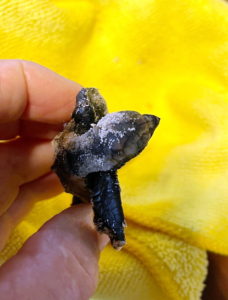
The hawksbill turtle is named after its pointed hawklike beak, ideal for poking into reef cracks for its favorite food, sponges. Decimated for its lovely shell, so-called “tortoiseshell,” the species remains critically endangered. ©Susan Scott
No one knows the location of the nest that produced the hatchling, but nearby Bellows Air Force Station has reported sea turtle nests on its beaches. It’s possible at least one of those nests contained hawksbill eggs.
On another beach-walk, I found a striking red reef lobster, a 5-to-8-inch-long creature, common on Hawaii’s reef but hard to see when snorkeling or diving. I usually get only glimpses of these lobsters’ antennas in the water, because the creatures back into holes during the day, coming out only at night to scavenge.
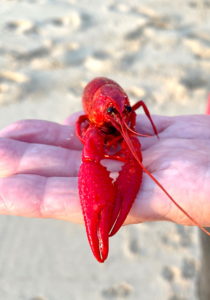
Red reef lobster. ©Susan Scott
“It’s so short,” another neighbor said, as we examined the fresh remains of the animal.
It was short because the lobster’s rear half had been bitten off. We humans aren’t the only species who consider lobster tail tasty.
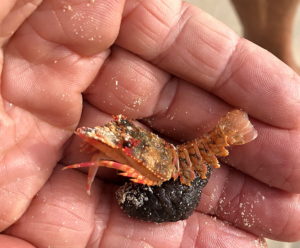
An immature lobster, tail intact, also washed up on Lanikai Beach. Hawaii hosts 17 lobster species. ©Susan Scott
One of my other first-finds came one morning during an exceptionally low tide, so low I could walk past the rocks and sandbags Lanikai residents have piled on the beach to protect their properties. Over the powdery white sand skittered dozens of baby rock crabs, or ‘a’ama.
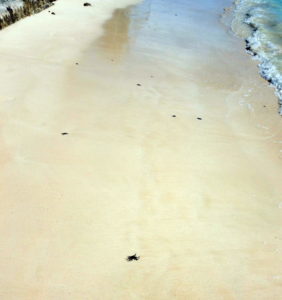
Baby ‘a’ama are rarely out in the open like this. ©Susan Scott
As I walked, those rocks came alive with dozens of ‘a’ama, but I had to look fast. The crabs are experts in ducking into narrow cracks to hide.
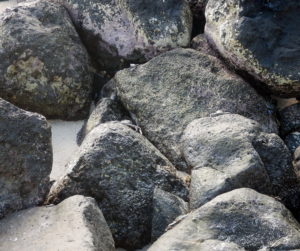
Crabs? What crabs? (Above) See 10 ‘a’ama below in the same picture. ©Susan Scott
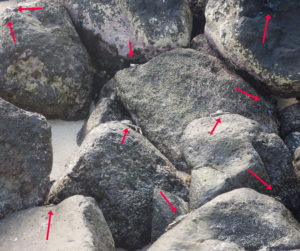
Because it’s so rare that we ever get to walk that far on Lanikai Beach, that day the crabs were the talk of the beach-going neighborhood.
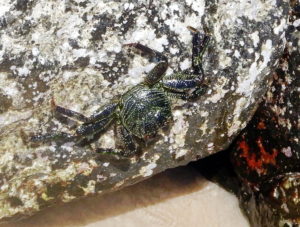
Adult ‘a’ama a second before disappearing. ©Susan Scott
I am also, as always, appreciating and admiring Hawaii’s Kolea as I work on the Pacific Golden-Plover project. If you are not subscribed to the site, www.koleacount.org see my Kolea news posted this week: https://www.koleacount.org/plovers-bring-us-together-autumn-update/
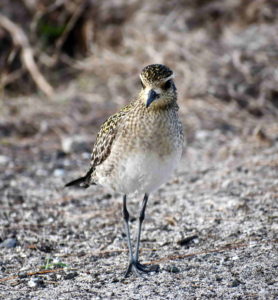
A winter Kolea. Some individuals have white feathers on their bellies, which may explain a Kolea fan’s report of a white Kolea she saw in flight. ©Susan Scott
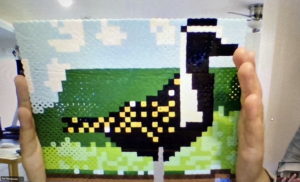
Leggo Kolea created by second grade student, Ian. (Sent to me by his teacher.)
Being forced to stay home helped me more fully appreciate the ocean, land, plants, and animals right here under my nose, as well as giving me time to better know my neighbors. Both are gifts.
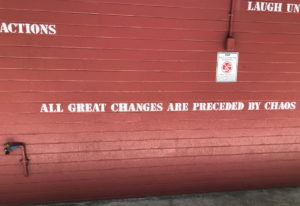
A wall in Kaka’ako.